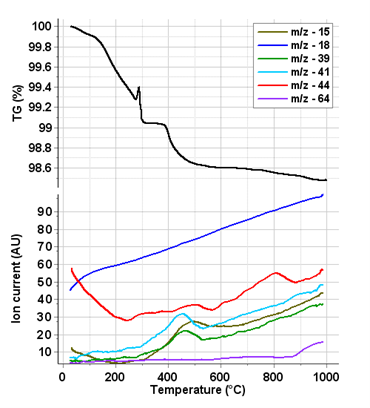László Trif, a researcher at the Institute of Materials and Environmental Chemistry of the ELKH Research Centre for Natural Sciences (TTK) collaborated with a long-standing international research group and participated in the complex study of the latest Mars-derived meteorite that fell to Earth, called Tissint. The examinations he conducted contributed to the verification of the presence of numerous organic materials – including low-carbon-number aliphatic carboxylic acids, aldehydes, olefins, polyaromatic, and organic magnesium compounds – formed under various abiotic conditions in the meteorite. Tunable laser spectrometer studies by the Sample Analysis at Mars (SAM) instrument, operating on Mars' Curiosity rover, showed similar results. The analysis of the meteorite contributes to the understanding of the physical-chemical processes occurring on Mars' surface and the formation of various organic materials. The paper presenting the results co-authored by László Trif appeared in the prestigious scientific journal Science Advances.
Earlier, researchers emphasized that organic molecules and life could have been formed on Earth under special circumstances several billion years ago. There was no evidence that life similar to Earth's could exist on other planets. This opinion began to change when researchers started to analyze meteorites which reached Earth’s surface, among which one of the most recent fall is the Tissint meteorite (formed hundreds of millions of years ago and named after the place where it landed in Morocco about 11 years ago) that was analyzed very thoroughly using special, sensitive instruments. It became clear that unraveling the origin of the Tissint meteorite's organic compounds would help to understand whether Mars has ever hosted life like that on Earth or not.
The Mars, the fourth planet from the Sun – and the nearest to Earth – is a dusty, cold, desert world with seasons and earlier active volcanoes. The robotic explorers have found evidences for the presence of water and thicker atmosphere billions of years ago. The thorough investigation of the Tissint and other meteorites proved that they are rich in small, simple organic molecules that are built of carbon, hydrogen, oxygen, nitrogen, phosphorous and sulfur atoms. The organic compounds are associated with life but the previous investigation of Martian meteorite proved that they could be built under non-biological, so called abiotic processes.
The researchers involved in the investigation of the Tissint meteorite proved the presence of organic magnesium molecules – previously not found on Mars – and of heterocyclic molecules with CHS and CHN atomic composition.
Heating these meteorite samples, some part of the organic content (mainly molecules with low molecular masses) evaporates, thus can be analyzed directly, but the presence of water, carbon dioxide, sulfur dioxide, which form from the pyrolytic degradation of organics, as well as from the decomposition of minerals can be proved as well. Molecules with higher molecular masses, which are degrading upon heating, are dissolved from the powdered meteorite samples and analyzed with sensitive analytical instrumentation (Fourier Transform Ion Cyclotron Resonance Mass Spectrometry, FT-ICR-MS). Their presence was detected and analyzed in the Martian meteorites using laser spectrometers.
All these results uncover details about processes that occurred on Mars and help to understand the formation and dynamics of organic compounds formed under the Martian atmosphere. They also reveal details about abiotic organics formed through water and rock interactions.

Schmitt-Kopplin P, Matzka M, Ruf A, Menez B, Chennaoui Aoudjehane H, Harir M, Lucio M, Hertzog J, Hertkorn N, Gougeon RD, Hoffmann V, Hinman NW, Ferrière L, Greshake A, Gabelica Z, Trif L, Steele A (2023). Complex carbonaceous matter in Tissint martian meteorites give insights into the diversity of organic geochemistry on Mars. Science Advances. DOI: 10.1126/sciadv.add6439